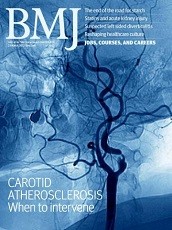L. McRedmond
McRedmond L. The voice of conscience. J Ir Med Assoc 1969 May;62(383):189-90 PMID:5770867
Protection of Conscience Project Library
Service, not Servitude
McRedmond L. The voice of conscience. J Ir Med Assoc 1969 May;62(383):189-90 PMID:5770867

Extract
I think we must all be a little tired of the diatribes from some members of the medical profession in the press and on television against the Abortion Act. There are quite a number who find it is satisfactory. . . We see these patients at clinics, and we take them into National Health Service hospitals, either maternity units or gynaecological units, and whenever possible do the operation personally… I am a little amazed at the howls of protest that it is interfering with the ordinary work of units and outpatient clinics. . . .I have not, as yet, found that it is making my waiting-list longer or interfering with the intake of patients into the maternity units.
Soldenhoff RD. (Correspondence) Abortion Act in Practice. Br Med J. 1969 Apr 05;51.

Extract
The Act does not give Dr. Hughes the right to castigate those psychiatrists who, acting “in good faith,” are seriously in doubt as to whether an abortion is justified, and for good reasons know that support and treatment would be at least as effective as abortion in dealing with the problem be it-social or medical. They have ample clinical evidence- to support the ” good faith ” of their decisions . . .. It would be of great interest to see- what factual evidence could be produced to support the many decisions to abort under the present Act.
Sim M. (Correspondence) Abortion Act in Practice. Br Med J. 1969 Apr 5;2(5648):50-51.

Extract
In philosophical ethics, if one asks the question, is ethics possible, it is inconveniently, and, I will argue, erroneously assumed that he has also raised the notorious problem, what is the definition of “the good”? Various confusions attend the latter inquiry, including the remarkably ambiguous insistence that “the good” cannot be defined – implying that one in fact knew a great deal about its meaning in order to know this. I here intend to reject this typical but inconvenient quest principally because all such initial inquiries into the definition of “the good” are potentially important only within a particular ethical perspective, which is already therefore presupposed as true. The logic and ethical value of that perspective, here named legalistic or authoritarian ethics, is to be contrasted with the perspective called creative ethics, and discarded.
Belaief L. Responsibility and Conscience. Philos Today. 1969;13(1):60-79.

Extract
The Abortion Act is the law of the land and has already proved of immense benefit to many of my patients. It is there to be used and to be applied uniformly throughout the country. It is the antagonism to abortion reform of many doctors, particularly N.H.S. consultants in certain parts of the country, that creates long queues for abortion. . . If all doctors, general practitioners and consultants, put their patient’s welfare before their own religious and biased cobwebbed ideas on abortion, then the new Act would present no problems at all..
Hughes JH. (Correspondence) Abortion Act in Practice. Br Med J. 1969 Mar 8;1(5664):637-638.

Extract
In fact, the London-based Pregnancy Advisory Service, the only one about which I can speak with authority, is a registered charity run on similar lines to the Family Planning Association. It employs a full-time social worker and doctors on a sessional basis who advise patients who have not been able to obtain a sympathetic hearing from their own doctors, or those who, in increasing numbers, have actually been sent to us by their family doctors because, although they have grounds for abortion under the Abortion Act, the local consultants are unable or unwilling to accept most abortion cases, and the patients cannot afford the fees charged for abortions in regular private practice…
Abels SR. (Correspondence) Pregnancy Advisory Services. Br Med J. 1969;1(5642):506.

Extract
Already we are finding that the impact of the Abortion Act is making great demands on hospital beds and operating time, and we agree wholeheartedly with Mr. Lewis’s statement to the effect that the whole character of the gynaecologist’s outpatient work has altered because of the numerous requests for termination at almost every session.
Soltau D, Baker W. (Correspondence) Abortions and Gynaecological Practice. Br Med J. 1969 Feb 22;1(5642):506-507.

Extract
The part played by the Royal College of Obstetricians and Gynaecologists in the framing of the Abortion Act is familiar. The College aimed to make it legal to terminate a pregnancy only on medical grounds . . . Moreover, we wished to preserve the right of a doctor to refuse to participate in the treatment of any case to which he had an objection on grounds of conscience: hence the famous “conscience clause.” . . . we did not expect a very great change in practice . . . How wrong we were….
Lewis TLT. The Abortion Act. Br Med J. 1969 January 25; 1(5638): 241–242

Extract
. . .at the present rate and with no further increase in demand the annual number of abortions in England and Wales would be at least 35,000. He compared this demand with an estimate from the Ministry of Health and Registrar General’s Office of 1,600 therapeutic abortions in 1958 and 2,800 in 1962. The public have thus endorsed the Act and are asking doctors to implement it in a liberal way. . . . It is apparent that the Abortion Act has brought many people what they wanted-namely, a more liberal attitude towards the termination of pregnancy. . . The number of unwanted pregnancies indicated by the latest figures underlines the need for all doctors working in the National Health Service to provide adequate and accurate advice on contraception.
BMJ. (Editorial) Demand for Abortion. Br Med J. 1969;1(5638):199-200.

Extract
[Notes increase in abortion since change in law. Discusses abortion methods.] “In summary, when the decision has been taken to terminate pregnancy it is best carried out in the first fourteen weeks by a conventional one-stage evacuation or by vacuum suction, and later in pregnancy by abdominal hysterotomy. But therapeutic abortion is not a simple operation. Those who would extend the scope of legal abortion on purely social grounds would do well to remember that no method of terminating pregnancy is entirely devoid of risk. The operation is only as safe as the surgeon who performs it. Mishaps will occur, and they will be kept to a minimum only when operations are performed in well-equipped hospitals by skilled gynaecologists who are well aware of the dangers.”
BMJ. (Editorial) Therapeutic Abortion. Br Med J. 1968;4(5634):786-787.